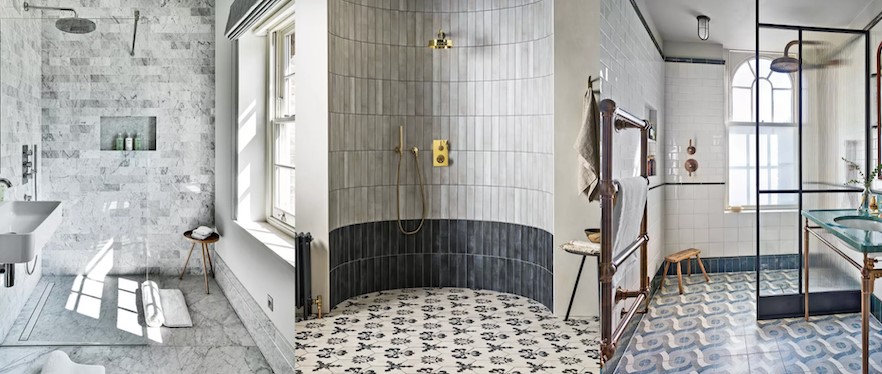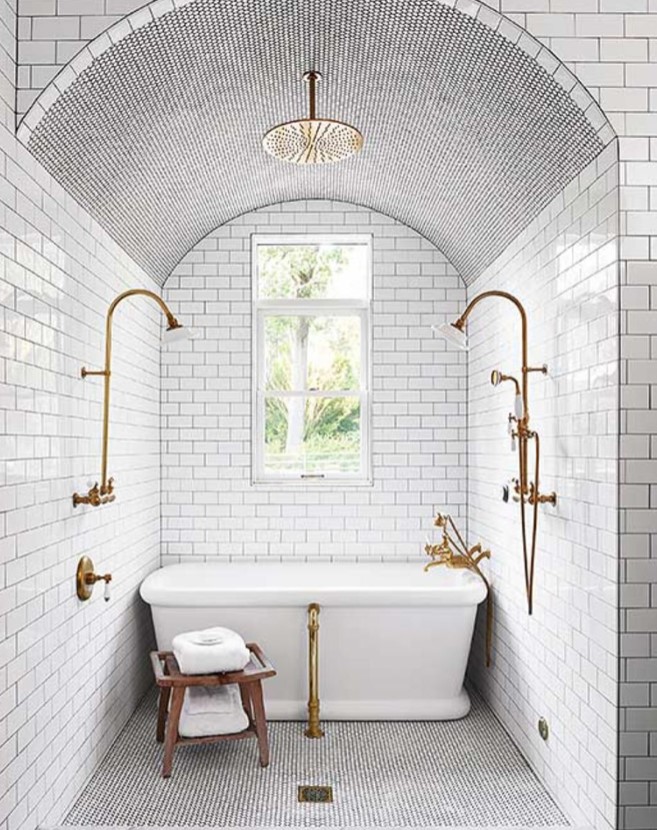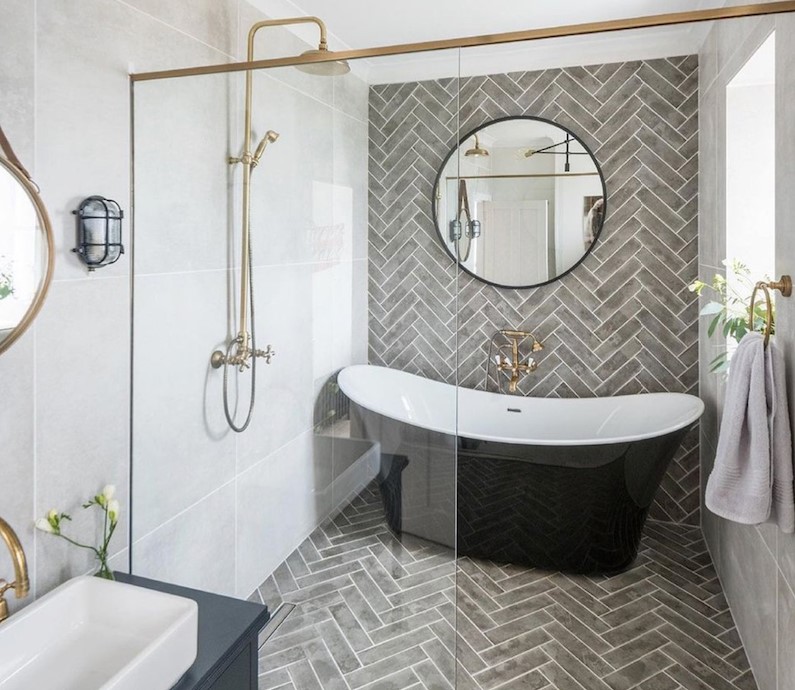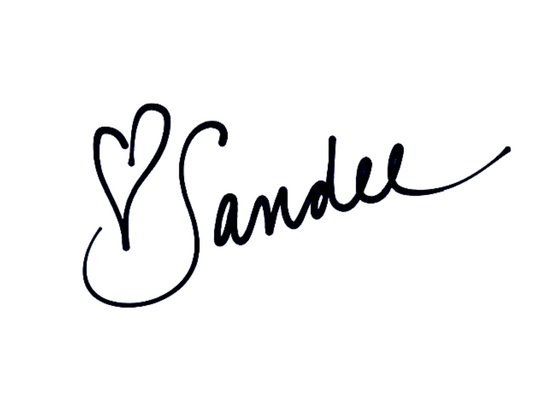You’ve heard of the open-concept kitchen…. but have you heard about this HOT NEW HOME TREND the open-concept bathroom? It may sound slightly scandalous, BUT the idea centers on creating a private, waterproof space and immersing your home with all the elements of a luxe bathroom.

A WET ROOM is a totally waterproofed or tanked bathroom with a shower area that sits at the exact the same level as the rest of the floor. The coolest part? The water drains away through a flush drain within the shower area! All while the walls and floor are sealed by a waterproof membrane, so there is no risk of runaway water causing damage.

The trend has been popular in Europe for YEARS, but it has offically made it’s way to Amercia is now taking a strong hold in the states.
Some characteristics of these bathrooms include:
- An open-concept layout
- A frameless, zero-entry shower
- Floor-to-wall shower tile
- Freestanding tub
- Floating vanity
- and an ADA-accessible design- (including the hardware and lighting).

While a wet room bathroom provides the same functions as a standard bathroom, there are some key differences:
- Wet room bathroom showers flow seamlessly into the rest of the room. Standard bathrooms separate the shower with a curb or other threshold.
- Floor-to-ceiling tile ensures a watertight seal in a wet room bathroom. Standard bathrooms may have wallpaper or bead-board.
- Wet room bathroom floors slope toward the shower drain. Standard bathrooms have a flat floor.
Let’s go over the pros and cons of this trending style…
PROS
- Makes your bathroom appear roomier and spa-like without increasing square footage.
- No shower curb gives you more flexibility when designing the bathroom layout. You gain an extra four inches of space otherwise taken up by the curb, and the shared space permits more creativity.
- No curb makes the shower accessible to all.
- Increases the resale value of a home, because it’s essentially a bathroom remodel.
CONS
- Enlarging the shower pan to include the entire bathroom floor and wall tile significantly increases the cost of a bathroom remodel.
- Depending on the layout, can be harder to keep clean and dry because water goes everywhere.
- Bathroom storage and furniture pieces must be waterproof.
- Limited variety of materials. Drywall and medium density fiberboard (MDF) can’t be used. If the sink is in a heavy splash zone, you might want to consider a wall-mounted sink basin that does not have any wood or metal that could be susceptible to corrosion.”
What do you think? Are you up for this concept or are you going to stick with your traditional thoughts??
